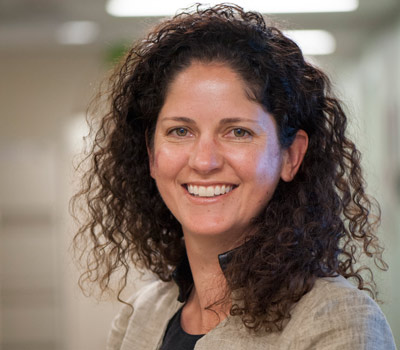 Dr. Lisa Richardson, General Internal Medicine Physician, combines both Aboriginal teachings and traditional medicine. (Photo: Danny Santa Ana)
Dr. Lisa Richardson, General Internal Medicine Physician, combines both Aboriginal teachings and traditional medicine. (Photo: Danny Santa Ana)
National Aboriginal Day: June 21 is a day to celebrate the diverse cultures and outstanding achievements of First Nations, Inuit and Métis peoples in Canada. In honour of Aboriginal Day in Canada, we're featuring a story about Dr. Lisa Richardson, a GIM physician who has incorporated her Anishinaabe heritage into her work.
Growing up, Dr. Lisa Richardson felt she lived between two worlds.
Richardson is of Aboriginal (Anishinaabe) and European descent, and learned to integrate different cultural traditions and histories.
Art vs. science
On her way to becoming a General Internal Medicine physician, Richardson found her academic career required a similar balance, as she straddled two disciplines – art and science – while studying both English literature and biology as an undergraduate student at McGill University.
Today, Richardson understands medicine to be as much about art as it is science.
Both her personal and academic background influence her belief that the practice of medicine involves both the scientific mind and emotional engagement.
Treating the whole person
"The Medicine Wheel is a powerful symbol with concepts that have enriched the way I practice with all my patients," said Richardson. "It can teach us a lot about treating the whole person, rather than just looking at the physical, the numbers from a test, or imaging."
Integrating traditional teachings and principles from the arts in her medical work provides helpful perspectives, she says. But encouraging others to share that space can be tricky.
"It's challenging living on the edge of these two worlds," says Richardson. "In the social sciences it's seen as a good thing, but within Western medical institutions it's deemed 'fluffy'."
Art of Medicine
Richardson is working to bridge these worlds through the
Art of Medicine program within the HoPingKong Centre for Excellence in Education and Practice (CEEP) at Toronto Western Hospital.
The Art of Medicine is an initiative aimed at bringing human factors of sight, hearing, and touch more centrally into the doctor-patient relationship, as well as bringing out-of-the-box thinking to clinical decision-making. The program incorporates perspectives from the social sciences to add to the traditional medical knowledge already ingrained in the minds of physicians and medical students.
Richardson has also partnered with the University of Toronto and the Art Gallery of Ontario to teach an elective course called
Looking Through Art: Art and Medicine. It involves a combination of gallery tours and guided drawing practice to explore elements of observation.
'Hidden curriculum'
By straddling the boundaries of several disciplines, Richardson hopes to counter what she calls the "hidden curriculum," whereby medical training can have the effect of eroding compassion in medical students and practitioners.
Richardson's background has also made her more aware of the inequalities that can face people in the health-care system. As the co-lead for Indigenous Health Education at the University of Toronto, she believes it is important to teach medical students about "cultural safety".
"It is important that we provide care in a culturally safe manner by recognizing our biases to the patient's cultural background or religion or race or sexual orientation," said Richardson.
"Cultural safety is more than just cultural sensitivity and awareness, it is about recognizing the power imbalances in the relationships between patients and their health care providers, and also about finding out what is important to the patient," she continued.
Richardson knows that to understand and apply these principles takes time, but it is possible. At Toronto Western Hospital, Richardson says the work in this area is valued and she works with physicians who consistently blend different perspectives to improve healthcare.
Feeling positive about changes she sees, Richardson highlights the fact that UHN is working on developing health equity strategies, which strives to ensure people across every demographic, including Aboriginal peoples, are able to access our health care services equally.
"Toronto Western Hospital is a very special place – in that our patient population is very diverse. We should continue to build on that niche of ours," she said.
